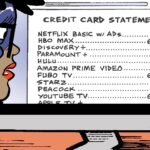“The Sell Sider” is a column written by the sell side of the digital media community.
Today’s column is written by Rachel Parkin, senior vice president of strategy and sales at CafeMedia.
Fact: Nearly every advertiser wants video and there isn’t enough supply to go around. In light of that, why are publishers struggling to justify investment in their video businesses?
The answer is complicated, but the short version is that limited video supply has created a heavy reliance among buyers on open market programmatic buying. That, combined with the prevalence of fraud, dominant presence of YouTube and Facebook and bias toward traditional formats, has put downward pressure on both prices and the supply of brand-safe video inventory.
It’s true that advertisers want fraud-free, premium inventory, but they aren’t yet heavily buying video through the channels where that can be achieved. How can we untie this Gordian knot?
Fraud
The video market is rife with fraud. Excess demand, limited supply and high CPMs make it attractive for fraudsters. With as much as 50% of programmatic video impressions purported to be fraudulent, per a joint study from the Association of National Advertisers and White Ops, the effective human and viewable CPM for a buyer who may be paying, say, $12 on the open market could be twice as high.
The logical response to this state of affairs, and the one some marketers have chosen, is to buy directly from that publisher via a private marketplace (PMP) and to pay a $24 CPM. However, many advertisers still insist PMP rates be competitive with prices they are used to paying in the open market.
The resulting lower returns for video inventory transacted through PMPs makes it difficult for publishers to justify investing more in video creation or, frankly, to open any video at all to programmatic buyers.
Brand Safety
While YouTube and Facebook have tried to make it easy for advertisers to sidestep the complexity of video, ad buyers are uncomfortably aware that their scale comes from a sea of user-generated content. The technology for screening the appropriateness of these videos will never catch everything, and Facebook has acknowledged as much with the recent announcement that it will hire 3,000 human content monitors.
The recent brand-safety fiasco and public outcry from advertisers may have started to chip away at the platforms’ armor, but advertisers haven’t done a total about-face yet. Buying PMP video from publishers that produce editorial videos designed to connect with their audiences is the only way to assure brand-safe media environments. And by channeling dollars to premium, publisher-originated video content, advertisers will incentivize media companies to create more video content.
Advertiser Dilemma
The challenge facing advertisers is that they lack good choices. Buying through Facebook and YouTube presents brand-safety concerns. Buying on the open market has significant fraud (and brand-safety) issues. Buying through PMPs is complicated and hard to scale.
Many have chosen to go the easy route, and rely on technology to deal with fraud and brand safety – but clearly that isn’t a true solution. Domain spoofing alone is a huge fraud issue that no current platform has a good fix for.
The best answer to brand advertisers’ video challenge is to work directly with trusted publishers via PMPs. While this requires some manual effort, it gives advertisers exactly what they want – brand-enhancing advertising in trusted, well-lit environments that are genuinely brand-safe and free of fraud.
A New Video Paradigm
As advertisers seek the safety of working with trusted publisher partners via PMPs, the stage is set to ignite a virtuous cycle that will create the influx of quality supply advertisers need. Together with the launch of video header bidding, access is now open and free markets can go to work.
Publishers shouldn’t be afraid to set a lower-than-expected CPM floor, to prime the pump and get as many buyers as possible interested and scaling. With premium video in short supply, multiple advertisers will bid up the price to a new equilibrium. Today’s lowball bidders will eventually be frozen out.
Similarly, advertisers should know that prices are going to increase but will give them more of the quality video they want. Win rates will tell advertisers what the new market equilibrium is. Advertisers’ openness to change, over inertia, will ultimately enable publishers to create new video inventory as result.
Let’s all be part of the solution.
Follow CafeMedia (@CafeMedia_) and AdExchanger (@adexchanger) on Twitter.














